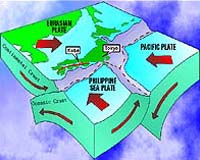Mumbai, Jul 21, 2009 1303 hrs IST

SUS has announced its Xtreme Design series motherboards, which is designed using selected materials and features a special circuit design combined with optimized board layout. These motherboards are expected to deliver exceptional overall system compatibility and enhanced reliability by proficiently managing and reliably controlling core processes operating in the PC.
The Xtreme Design features innovative Stack Cool3+ to enhance motherboard component longevity. The Stack Cool3+ technology deployed in these boards is an advanced version of the 2oz PCB design used earlier. Stack Cool3+ offers 17 percent more cooling than reference designed boards. Additionally the Xtreme Design features Xtreme phase to ensure the most stable and optimized power delivery; and Turbo V for a real-time, dynamic processing boost. Both these features allow motherboard enthusiasts to experience optimal power performance under various loading conditions as well as an overwhelming boost of up to 51 percent in processing throughput.
The Xtreme Design series motherboards pass through stringent Electromagnetic Interference (EMI) test that is 30 percent more rigorous than industry benchmarks. The new motherboards have low EMI emissions, low Electrostatic Discharge (ESD) and an I/O bracket called Q-Shield. These features help to significantly reduce any negative health impact and potential damage to components.
ASUS will be launching a range of Xtreme Design series motherboards. Among them is the P6TD Deluxe, an enhanced version of the high-performance, X58-based P6T Deluxe motherboard. Technical specifications of ASUS P6TD Deluxe are
- CPU: Intel Socket 1366 Core i7 Processor Extreme Edition/Core i7 Processor Supports Intel Dynamic Speed Technology
- Chipset: Intel X58 / ICH10R
- System Bus: Up to 6400 MT/s
- Memory: 6 x DIMM, Max. 24 GB, DDR3 2000/1866/1800/1600/1333/1066
- Expansion slots: 3 x PCIe 2.0 x16, 1 x PCIe x4, 2 x PCI
- Multi-GPU: Supports NVIDIA SLI and ATI CrossFireX Technology
- Storage: 6xSATA 3 Gb/s ports, 1xExternal SATA (SATA On-the-Go), 1xUltraDMA 133/100/66 for up to 2 PATA devices
- LAN: Dual Gigabit LAN controllers 2xMarvell88E8056 PCIe Gigabit LAN controller featuring AI NET2
- Audio: ADI AD2000B 8 -Channel High Definition Audio CODEC
- Other I/O ports: 1xPS/2, 1xeSATA, 1xIEEE1394a, 2xLAN, 14xUSB 2.0, 1xOptical S/PDIF out, 1xCoaxial S/PDIF out
- Other Features: StackCool3+, Turbo V, Xtreme Phase, 16+3 Phase Power design, Express Gate SSD, EPU, AI Nap, Wind-Flow Heat-pipe solution, Fan Xpert, Optional Fan for Water-cooling or Passive-Cooling only, Noise Filter, Q-Shield, Q-Connector, O.C. Profile, CrashFree BIOS 3, EZ Flash 2
- Form Factor: ATX Form Factor, 12 inch x 9.6 inch (30.5 cm x 24.4 cm)









